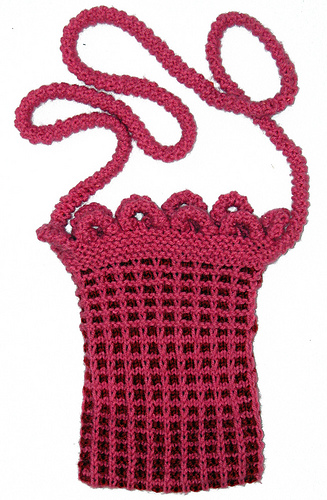By converting written stitch pattern instructions into Japanese charted symbol instructions you’ll get the visual information needed to knit the stitch patterns “in the round”.
I used a “Scallop Pattern” from one of my stitch source books to make the cuff on my “toe up sox”.
I started with the garter ridge to frame the pattern and ended with six rows of 1 x1 ribbing casting off with a stretchy bind off while adding in bobbles.
Note: Next time I’m using one size larger needle for the “Scallop Pattern”, then back to the original needle for the ribbing and bobbles.
For those of you who have taken my “Japanese Knitting Pattern Basics” class, use the “Chart Symbols Disc-1” to convert simple stitch patterns into Japanese charted symbol instructions.
Pick a pattern that has either all knit or all purl stitches for the even number rows to start, it’s easier.
Enter odd numbered row information from right to left onto the graph.
Enter even numbered row “reversed” information from left to right onto the graph. (if it says purl make it knit and vice versa).
Chart out at least two repeats for multiples above five.
You will easily see the “multiples of (x) number of sts” sequence, the “+ (x) number of st(s)” placement and the row patterns.
Since Japanese charted symbols are a description of the stitch pattern as seen from the right-side (as if you are looking at the finished fabric), you can read all the rows right to left when knitting “in the round”.*
Cast on or work over a number that is divisible by the “multiple of (x) number of sts”.
For example: “multiple of 13 sts” cast on or work over 39, 52, 65, 78, 91sts, etc. When working “in the round” don’t cast on the “+ (x) number stitches” and ignore them on the chart when knitting. Just keep repeating the “multiple of (x) number of sts” sequence (the stitches between the green lines on my graphed charts).
Once you “get” the process, you can attempt to graph more complex stitch patterns with 16 + rows, yo’s, increases and decreases etc. in the even numbered rows! My next project is to attempt to graph asymmetrical stitch patterns.
*Remember when knitting “flat” from a Japanese knitting chart all the odd number rows are read right to left, and all the even number rows are read left to right while knitting the opposite of what the stitch is. For example: to make a stockinette stitch pattern (all knit symbols on a chart) you have to purl the even number rows to make them appear as knits on the right-side.



